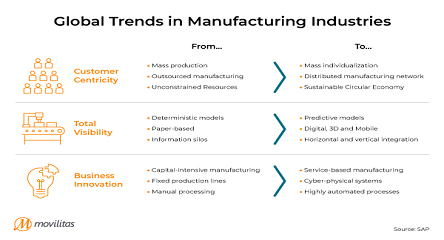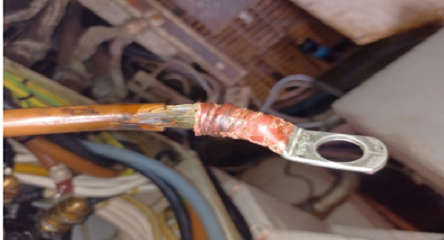Silver Bullets Can Backfire
This article first appeared in PEM magazine, April/May 2014. PEM is now incorporated into MRO Magazine. I’ve updated it with the benefit of another 5 years experience dealing with this very problem.
In my client work I find myself helping many companies who have tried, yet failed to improve their performance in maintenance and reliability. For those that are making their second (or more) attempt there are many reasons for the failures, some technical, some related to company culture and, almost always, things were done on the cheap and rushed.
This is an era of instant gratification and as our workforce becomes more youthful, it seems that is becoming even more prevalent. We want silver bullets and quick results. Indeed, if we know what we are looking for, some quick wins are usually possible, yet they will usually only scratch the surface when it comes to overall payback potential. What we see happening in the field, fleet or plant are the symptoms of some deeper problems. Addressing the symptoms alone is all but pointless. The symptom will return, like a bad cold after taking cough medication.
Quick wins are like the tip of an iceberg – 90 per cent remains hidden. Lasting change comes from that 90% that’s usually hidden. The quick wins are just the “low-hanging fruit.”
In most cases the “low-hanging fruit” is well-known to your employees. They see the evidence every day – the symptoms. They often wonder why no one in management has acted on it before. Employees do that often – they see the problems as someone else’s to fix, not theirs. After all, you don’t usually pay the folks at the shop floor level to be problem solvers – in maintenance they are fixers.
Companies don’t often listen to their own employees as well as they listen to outsiders. I see it a lot because people will listen to me. Yet much of what I tell my customers’ managers’ comes from their own employees. Those employees get a strong subliminal message from their employer that their observations, opinions and suggestions don’t count. When that happens they stop offering up their ideas. Innovation, creativity and good company spirit are stifled. This happens fast – the first few times that someone has a really good suggestion that is ignored, the tap is shut. As a general manager you will miss out on the benefits of the quick wins, and also help to keep the remaining 90 per cent of that iceberg hidden. Your people simply stop looking for it. When this happens, it takes an expensive “expert” to come along from outside to point out what you already had at your fingertips. Fortunately the outsider, although often received with some trepidation, usually gets a pretty good reception and once people realize that the outsider actually pays attention, they open up.
Before that happens, self-directed improvement has been stifled and lost. Then after the consultants deposit their extensive report with an impressive and expensive business case, there will be a rush to “realize the value.” To some extent, it is also now necessary to justify the fees you just paid for the assessment to get that report.
The rank and file who already knew much of what the consultant reported will challenge the consultant’s credibility. After all, except for a brief visit, the consultants don’t really know your operation and they used interviews to get most of their material from your own workforce. However, at the management levels (finance, operations and the general manager) the value will be recognized as it is now converted from shop floor language to business language. What follows is often a rush to make the improvements – and all too often, without help and driven entirely by people who created the problems (or at least tolerated them) and didn’t know how to resolve them. None of that has really changed. The result is usually a doomed improvement initiative. Seemingly simple improvements that require process changes supported by the training and other “change management” activities will be rushed. Old ways of doing things, which didn’t work, often become re-invented without sufficient thought about why they weren’t working before.
In one case, a large mine and ore processing plant, process improvements that could save tens of millions ultimately led to a reduced workforce. Some of the payback came from the reduced workforce but the bulk of it came from the process improvements and what they could generate. If the process redesign had been done appropriately, then natural attrition would have taken numbers down before the improvements were fully in place. No one would have been laid off and some replacements would have had to be hired. The new processes would have had time to become habit and attrition would barely be noticed. But the company didn’t wait.
They laid of hundreds to get the financial benefit with an expectation that the process benefit would follow magically. To the accountants this probably made sense – savings of costs, a part of the benefit, would come from reduced numbers. They could lay people off at any time easily, so they did. But they failed to change anything else. Needless to say, the formerly inefficient work processes remained in place. Yet the workforce was now smaller, just as inefficient and demoralized. Later, they attempted to make process changes. They were carried out halfheartedly. Survivors of the layoffs didn’t really change their practices, change management hadn’t been done at all. In attempting to grab a cost benefit quickly, only doing part of the work to implement new processes and ignoring the feelings of their employees, that company put itself in a very bad situation with a demoralized and disinterested workforce, working inefficiently with old practices on newly designed but only partially implemented processes.
Yes, their quick actions did save some payroll. Yet everything else bogged down, including work order execution, purchasing speed, payments to vendors, planning, and security processing for visitors. Costs went up because of overtime, but more importantly, performance tanked. Production levels dropped, quality suffered and marked share was lost. Those payroll savings started to look pretty feeble in comparison.
Any improvement program, maintenance, MRO materials cleanup, RCM and CMMS programs are all vulnerable. We all want rapid benefits but it is unrealistic to expect them in most cases. Problems that have taken years to manifest and create enough pain to spark the desire for improvements won’t be fixed quickly. That’s not to say that there won’t be some quick benefits and payback; often there is, but it’s just that tip of the iceberg. If your iceberg is big enough, then that tip can often pay for the improvements too, but you will need a thorough analysis of business case to show it.
Rushing into assessments will show potential benefits; rushing to grab the payback quickly almost always backfires. The proverbial silver bullet doesn’t really exist.





